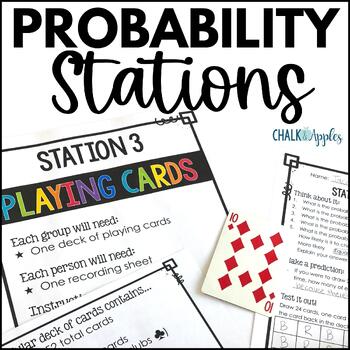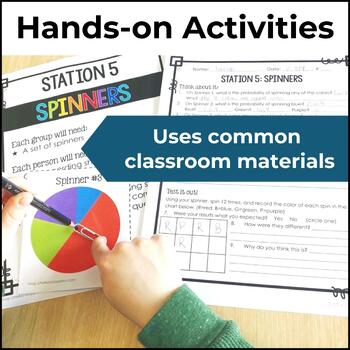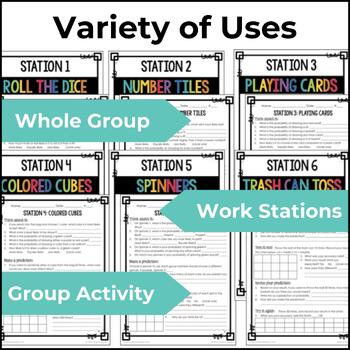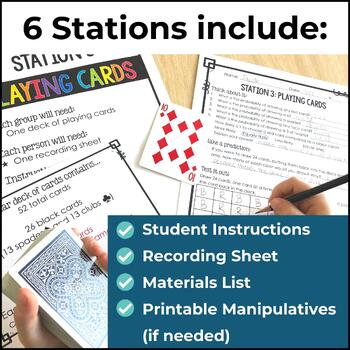Chance & Probability Activities: Hands-On Theoretical & Experimental Probability
- PDF
What educators are saying
Description
Make teaching probability exciting with these hands-on fun probability activities! This set includes 6 low-prep chance and probability stations perfect for exploring theoretical and experimental probability and critical thinking. Quick and easy setup plus clear student directions make these activities perfect for centers or substitute days, too!
Lead your students to discover concepts of probability by exploring it on their own before teaching probability rules. Students will love exploring probability concepts through these fun activities, and won't even realize how much they're learning!
Here's what you'll get:
- 6 probability activities perfect for centers or stations
- Station signs with instructions
- Printable manipulatives
- Student response sheets
- Answer keys
- Teaching notes
Your students will love practicing basic probability concepts with a variety of common classroom materials. They'll be out of their seats, engaged in mathematical discussions, and exploring probability concepts in real life.
All of these probability activities use manipulatives and materials readily available in most classrooms, but I've also included printable manipulatives just in case you need them.
Prep is quick and easy... Just print the student pages, gather the materials listed, and you're ready for a fun and engaging class!
The 6 included stations are:
- Roll the Dice
- Number Tiles
- Playing Cards
- Colored Cubes (or marbles)
- Spinners
- Trash Can Toss (always a student favorite!!)
TEACHERS LIKE YOU SAID…
⭐️⭐️⭐️⭐️⭐️ Meghan S. says, "My students loved the hands-on activities that helped them practice their skills and knowledge of probability. I loved how easy it was to set up and get organized."
⭐️⭐️⭐️⭐️⭐️ Melanie V. says, "This is my favourite math resource that I have ever purchased! I have been using it in my class for a couple of years now, and every time we get to this unit my students are excited and fully engaged in their learning. Now that I have laminated each station and gathered all the materials, everything is ready to go and is so easy for me to just pull out and get started with. Thank you!!"
⭐️⭐️⭐️⭐️⭐️ Anna B. says, "I LOVED using this with my class. We barely touched on probability on day one, did this on day two, and really engaged the students! My students were much more successful on this year's probability test than previous years, and I think this resource has a lot to do with that!"
⭐️⭐️⭐️⭐️⭐️ Emmilion Thoughts says, "Each station walked students through conducting an experiment and asked excellent questions to get them thinking about making predictions. "
___________________________________
You may also like…
→ Multiplying Mixed Numbers Task Cards & Scoot Game
___________________________________
Copyright © Chalk & Apples, Kristen Doyle
All rights reserved by author.
Permission to copy for single classroom use only.
Not for public display.
Please purchase additional licenses if you intend to share this product.





